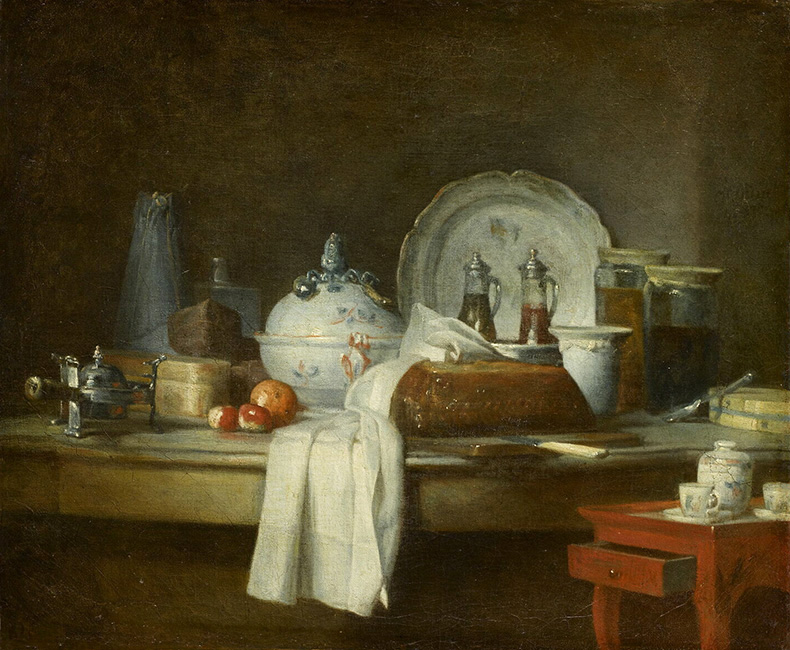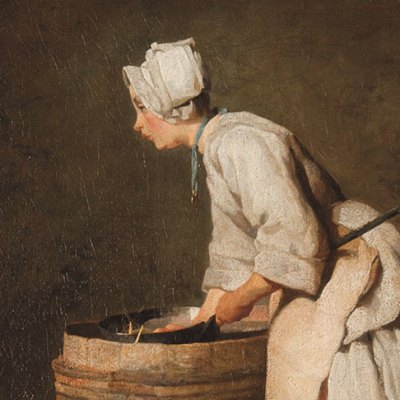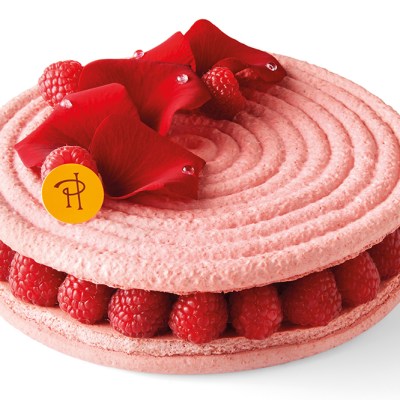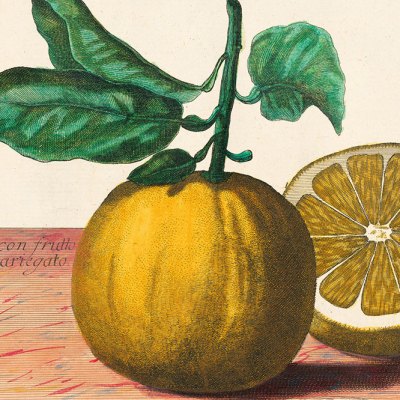Jean-Siméon Chardin’s A Basket of Wild Strawberries and Two Carnations (1761) is currently on a triumphal tour around France after a two-year campaign raised the €24.3m necessary to secure it for the nation. Exhibited since the beginning of this year at the Louvre-Lens, then the Louvre in Paris (alongside the museum’s 41 other works by Chardin), it is on show from 2 July at the Musée des Beaux-Arts de Brest; in October, it will go to the Musée d’Art Roger-Quilliot at Clermont-Ferrand.
First exhibited at the Paris Salon in 1761, A Basket of Wild Strawberries and Two Carnations is one of Chardin’s most admired yet least known late still lifes. Chardin painted no replicas or free versions of it, as was often his practice, thus other than when shown publicly, the life of this unique work of art has remained until now resolutely private, its image known only in reproduction. Moreover, notwithstanding the huge strides in Chardin scholarship made by Pierre Rosenberg at the time of the landmark exhibition at the Grand Palais in 1979 and since, no documentary evidence has come to light to tell us for whom the work was originally painted and what its contemporary owner(s) and viewers saw in it or experienced when looking at it. When A Basket was exhibited at the Paris Salon in 1761, it was unremarked by the Salon critics. Had it not been for a marginal sketch, drawn by the artist Gabriel de Saint-Aubin in his copy of the Salon exhibition catalogue (livret), we would not even know for certain the date it was painted.
Saying Grace (c. 1740), Jean-Siméon Chardin. Musée du Louvre, Paris. Photo: Stéphane Maréchalle; © 2010 Grand Palais RMN (Musée du Louvre)

What we do know is that some critics were disappointed that, in the late 1750s, Chardin abandoned painting domestic genre scenes such as Saying Grace (c. 1740), a later version of which he exhibited in 1761 alongside A Basket of Strawberries and Two Carnations, in order to return to still life, the occupation of his early career. Modern scholars have been unable to explain this reset, but they have observed significant changes in Chardin’s choice and handling of still-life subjects. Strawberries and carnations were novelties for the painter, whose first still-life choices more often brought dead game, stewing vegetables and copper pots to the canvas, setting them in a kitchen-like space. Removal of the scene to above stairs in his second act of still-life painting, and the greater refinement of both the utensils and ingredients he staged there, has encouraged some to read Chardin’s body of still lifes as an index of his material circumstances: the struggles of his modest beginnings reflected in the rough kitchenware of the 1720s and early ’30s; the ease of his maturity, secured by the wealth of his second wife, mirrored in the polished tableware and reflective glass in the compositions of the late 1750s and ’60s.
La Table d’office, dit aussi Les Débris d’un déjeuner (c. 1673), Jean-Siméon Chardin. Musée du Louvre, Paris. Photo: Stéphane Maréchalle; © 2010 Grand Palais RMN (Musée du Louvre)

We can develop this summary contextualisation a little. In the summer of 1757 Louis XV granted Chardin a studio and lodgings at the Louvre, below the Grande Galerie that once ran along the right bank of the Seine linking the Louvre to the Tuileries. Chardin moved to these lodgings from the dark and densely populated neighbourhood of Saint-Sulpice, on the Left Bank. Around the same time, he began to paint still lifes for some of his new artist neighbours: for the monumental sculptor Jean-Baptiste Lemoyne, for the king’s drawing master Jacques-Augustin de Silvestre and for the gold- and silversmith Jacques Roettiers. Chardin had always painted works for his friends, notably the portraitist Joseph Aved, but these new works for other royally warranted inhabitants of the Louvre suggest that he both reacted positively to the grander conditions of his new studio and its better light, and was more conscious of the artistic expectations raised by painting for one’s peers than he had been when painting for friends.
We generally think of high art in terms of the hierarchy of genres and thus primarily in relation to subject matter. Yet in the case of Chardin it has long been recognised that although his still lifes and genre paintings owe much to the art of the Low Countries, he was not drawn to its emblematic tradition. His still lifes are not, for instance, allegories of abundance or moderation. Rather, they describe the particular in the everyday. The art historian Antoine Schnapper estimated that, at the beginning of his career, Chardin averaged four pictures a year, a number that doubtless rose as he matured, but which nevertheless leaves in place the suggestion of a seasonal rhythm to his practice. A Basket of Strawberries and Two Carnations may not symbolise summer, but its composition speaks to the unities of time and place: these fruits and flowers respectively ripened and bloomed in Paris and its environs in June and July. Moreover, the stillness of the painting’s atmosphere captures the experience of time momentarily suspended and the particular feel of motionlessness provoked by summer heat. Chardin imbued A Basket of Strawberries and Two Carnations with meaning that exceeds, in short, that denoted by the list of its contents.
A Basket of Wild Strawberries and Two Carnations (1761), Jean-Siméon Chardin. Musée du Louvre, Paris. Photo ©: Hervé Lewandowski; © Musée du Louvre

But perhaps more important to the artist-viewer and Academician than this not quite spoken idea of summer were the formal properties of Chardin’s late natures mortes. The human presence often implicit in still lifes – food prepared by persons just off stage, a meal lately consumed by diners and abandoned – is not, in A Basket, that of the fictional consumer of strawberries and buttonholes, but rather that of the painter who has arranged this thingly creation. Chardin pushes fruit and flowers back from the picture plane, the shelf’s horizontality enlivened by the wickered roll of the basket’s rim and the dropping line of one carnation’s stem, which stops just short of the viewer’s reach.
In place of the cheap thrills of trompe l’œil, standard fare in still life, Chardin substitutes the triangular composition favoured by history painting – not for narrative purposes, but to invoke the presence of art. Circles of carnation, peach and cherry escort the epic delicacy of the pyramid of strawberries. Admired for the size of its blooms, the density of its crisp petals and the clarity of its colours, the carnation or ‘king of flowers’ was, in the 18th century, matched only by the ‘queen’: the rose. Named œillet in French apparently for its likeness to an eye (œil), these carnations simultaneously stand for, stoke and make us conscious of the pleasures of sight: of looking at and seeing through, and of thrilling to contrasts and resting to harmonies.
A Basket of Wild Strawberries and Two Carnations may not have the compositional complexity and human interest of the late version of Saying Grace (1761), but, when shown together in 1761 at the first Salon officially hung by Chardin, these two paintings articulated Chardin’s ambitions for his modest art. Now, thanks to the support of some 10,000 donors, this beautiful example of Chardin’s work is accessible to the public for its pleasure and admiration.
A Basket of Wild Strawberries and Two Carnations is on display at the Musée des Beaux-Arts de Brest from 2 July until 22 September.


